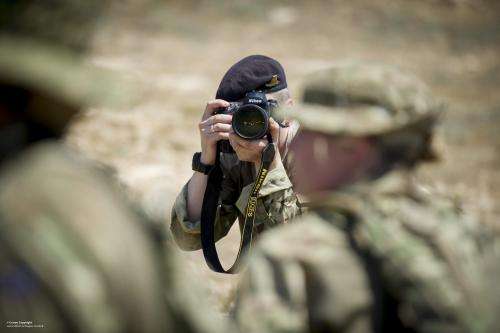February 16, 2015 weblog
Virtual-twin plan could support surgery for soldiers

A Saturday story in the MIRROR.CO.UK, the online edition of the Daily Mirror, carried a headline that made readers look once, twice, three times: "'Virtual twins' could save lives as doctors prepare to test technology by CLONING soldiers set to do battle." The story nonetheless made useful reading for practical purposes. The story, along with other reports from news sites, is about a technology approach presented at a scientific meeting event with the entire world listening. Soldiers headed for battle duty could be scanned before deploying and their body twin kept online.
Soldiers' virtual clones would be of use should they be injured and require the help of army medics for urgent reconstructive surgery. What we are looking at is a technology that enables the digitized self, a body in the cloud, where the soldier can be imaged while healthy, so that the data becomes available at some later point, with the virtual body's information making a potential impact on successful outcomes. Data from an individual patient's CT scans could be fed into the system. Full body scans could pick up details of bone contours. In total, the person's virtual twin would have all the organs, bones and nerves on view so that surgeons could use the clones to plan and rehearse complex operations. The Guardian's science editor Ian Sample reported that "Under the scheme, military surgeons would use 3D printers to make exact replicas of missing bone, such as parts of the skull or limbs, to use as models for surgical planning, or to implant directly into patients." Sample also said that the process of 3D printing to reconstruct bones lost to cancer or accidents would be "more straightforward if patients had perfect replicas of their skeletons stored digitally."
The Daily Mirror story by John von Radowitz described the technology as making use of "a table-sized touch-sensitive screen to present full-scale 3D images of the human body that can be stripped down layer by layer to reveal reveal organs, blood vessels, nerves and bones from any point of view." A demonstration showed how it was possible to rotate the cadaver image around, he wrote, tilt its body up, and probe deeper to uncover tissues and skeleto-muscular features in detail.
The machine, enabling students with a virtual body, is from the San Jose company Anatomage, and is used in medical schools. The company said its Anatomage Table is the most technologically advanced anatomy visualization system for anatomy education. Among those using the table, said von Radowitz, have been the Mayo Clinic, Imperial College and University of Edinburgh.
Dr James Mah, clinical professor at the University of Nevada, Las Vegas. demonstrated one of the machines at the American Association for the Advancement of Science (AAAS). According to The Guardian, Mah demonstrated how CT scans can be combined with other medical images such as MRI scans, to create a virtual body for teaching purposes.
Dr. Mah, quoted in the Daily Mirror story, spoke of lost limbs and other tissue, where the challenge is to reconstruct them. "A virtual template in the field would be very useful, and that's been in discussion." He said, "At any point we can rotate through and zoom in and move to any area," he said. "We can get deeper into the anatomy until we see organs, liver, stomach, intestines ... eventually we can even go through and remove the skeleton. We can keep looking until finally we're at the very basic brain and brain stem."
© 2015 Tech Xplore

















